Worlds of If, November 1969: A Retro-Review
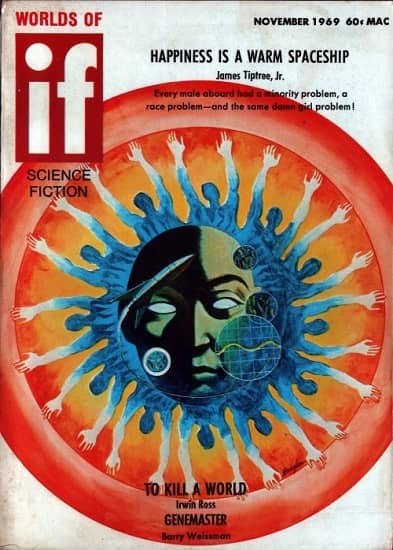 |
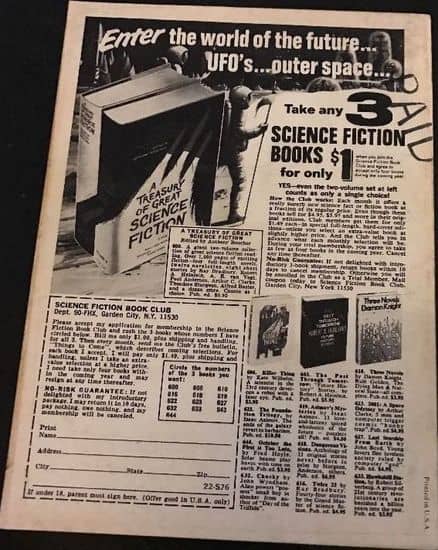 |
This is Part 4 of a Decadal Review of vintage science fiction magazines published in November 1969. The articles are:
Amazing Stories, November 1969
Galaxy Science Fiction, November 1969
The Magazine of Fantasy & Science Fiction, November 1969
Worlds of If, November 1969
Analog Science Fiction/Science Fact, November 1969
The cover is by Gaughan, and although it is not specifically stated, it could be influenced by “To Kill a World” and/or “Genemaster.”
Editors Page, “The Dream Keepers” by Jakobsson.
A brief, and perhaps overly-stylized, write-up of the 1969 World Science Fiction Convention — the banquet and Harlan Ellison’s speech, specifically.
[Click for bigger images.]
They had paid brief honors to their quick yesterdays and were reaching for the future where none of them had been. And now their man in the light — Harlan Ellison — was calling down the hoving unhuman who was feeding in the air thick with dreams.
Sounds like a hell of a night!
“Happiness is a Warm Spaceship,” by James Tiptree, Jr. Young Lt. Quent, son of the anti-integration-of-Federation-Space-Force Admiral Rathborne Quent finds himself assigned as 1st mate to a multi-species crew aboard the Patrol Boat Ethel P. Rosenkrantz. The menagerie of his crewmates includes (it is best if you stand and read these loudly):
The Ursine Imray — Captain!
The Lizard-like Svensk — Science!
The Bat-Like Sylvester Sylla — Navigation!
Old Man Pomeray — when sober, Communications!
The Octopus-like Morgan — Engineer!
Young hottie Mellicent Appleby — Logistical Supply and Cook!
The Ant-like soldiers — who spend the entire story in (semi-working) suspended animation!
This is a good, rambunctious story and it clearly was written with Star Trek in mind. Tiptree does a great job of showing the ass-end of the Federation Galactic Force; a broken-down ship filled with broken down beings trying to keep the frayed edges of the empire from coming apart.
Quent is young and a bit naïve, but he realizes that for such a shoddy outfit they do a great job of keeping those loose ends tied. The story gets a little weird in that they go up against some Drakes (space pirates), who turn out not to be there at all — being part of hoax to get Quent to crack under the pressure! He calls their bluff and really gives ‘em the mustard:
“Agh, your Drakes, the whole thing stank from the start. Let me tell you something, gentlemen.”
Quent shook the laser at Sylla, “You jeer about my training but there’s a thing you don’t know about Academy life. In the years I’ve been a cadet I’ve been hazed and hoaxed and put on by experts. Experts.” His voice rose. “Caristo, what I’ve put up with. And you, gentlemen, are a clobbing bunch of amateurs. Tri-di gigs.”
He snorted, glaring contemptuously at them. No one spoke.
All of which is true; then the pirates actually show up and it’s all-for-one and one-for-all!
A part that is hard to follow in this story is that the integrated crew is against integration… I’m not sure why. I read the last part like three times and am still unclear. Mostly, I think, they are afraid that the human crews on big ships will absorb the well-trained Patrol Boat crews that hold the fraying edges of the empire together. I think…
An open secret in SFF circles is that James Tiptree Junior was the sci-fi penname of one Alice Sheldon, a ruse she perpetuated for years, maybe even decades. A part of this is probably that she was pretty unsparing with her female characters, Mellicent Appleby — (Logistical Supply and Cook!) is pretty much just ‘the dame.’
“To Kill a World,” by Irvin Ross. This is a helluva story — Colonel Ward, wife dead of cancer, career down the tubes and hope coming from a bottle — damn near drops the USA to Def-Con 1 when what first appears to be a guided missile turns out to be a rocket that lands near Monroe Airforce base. The rocket is not big, maybe ten feet long, and it appears to be of no earthly origin. There are some writing samples around the nosecone, and Col. Ward calls in a philologist.
While he studies the language, they break open the rocket and find a humanoid inside, in a bad way.
Medics carried it to the hospital, where it lay, unconscious.
It was out of form, as though having lived in a twisted world — limbs swollen at the extremities and tapering inward toward the body, giving it a comic-strip appearance. Head ovoid and smooth with features that seemed to be painted on like those on an Easter egg. And washed all over with an egg-yolk yellow.
Martians looked like that, huh? Venusians? Who?
No earthly origin.
Ward returned to operations and smoked on cigarette off the end of another. Stubble adorned his chin. He felt better with the stubble and with the uniform rumpled. In a couple of days, he would be out for good and able to slouch around in sneakers and a T-shirt.
Then Hutchison called from the hospital. Major Vickers, he said, had suddenly conked out. He was turning egg-yolk yellow.
With an alien infection communicable to humans, drunken and broken man Ward finds himself with a weighty problem.
The infection is from alien bacteria — intelligent bacteria, and they are advancing quickly. Colonel Ward has to shoot a guy that tries to break quarantine, then realizes he really can’t win this fight and orders the base closed, then nuked. The story does a good job with military red-tape, and a man at the end of his rope holding together men at the end of their ropes.
“Gene Master,” by Barry Alan Weissman. A far future where genetically engineered humans have been living all throughout the galaxy for tens of thousands of years. A particular monarch wants a particular specimen for his zoo — an original human. Which, of course, is a myth.
“No, you’re wrong. But I am amazed at your wealth of knowledge. The diplomat, a very important person, I might add, assured me that recent discoveries on a small world near Center predate all other discoveries by well over a billion cycles, and clearly show that the race was just beginning space travel at that time. He didn’t come right out and say it, but he obviously believes that it is the Original’s original world; the cradle of humanity. It’s called —” he shuffled through some papers in his pouch and then came with one and read from it — “called Terra.”
“And you wish one of the inhabitants for your zoo?”
“No. If that were the case I would have just dispatched a capture expedition. Unfortunately, the present locals are survivors of a reseeding project.”
The MC (main character) tracks down a Terran and a careful reader will surely notice that the Terran is actually from Sol IV — Mars. MC gets a sample and that, plus some material from a 4,000 year old heart from the organ banks does some manipulations and voila! Original. Who, upon delivery to the royal personage, waves his tentacles and flies away to his new home.
“For Sacred San Francisco,” by Alfred Coppel. Jere is a fighter pilot for the city-state of San Francisco. Her whole life has been wrapped up in the three-cornered war between LA, Denver, Phoenix, San Francisco, and Seattle, fighting for natural resources, oil, metal, and men. Men are sent to the breeder pens to produce more children for the Matriarchy to then get more metals, oil, and men. Jere’s squadron is scrambled to deal with some LA bombers and she’s shot down. In the wilds she meets up with a Wildman. Coppel does a good job of painting the struggles of the three-cornered war, with everyone using ancient equipment and things barely holding together — a running theme throughout the story.
The turbine was vibrating badly but there was not a machine ship in San Francisco capable of repairing it to original specifications and the motor itself was nearly a hundred years old.
But when Jere meets the wildman, the story gets very weird. He’s a total prick — smacks her around some, tells her how much better it’ll be when the men re-take everything over, rapes her, and so, when she plugs him (twice!), steals his map with every intention of getting back to ‘Frisco so they can raid his town, one can’t help but cheer a bit.
But what exactly was Coppel going for? Is a nod/response to certain classic SF stories where an escapee from The Man is happily led to a little survivor cabin? Does it have a particular feminist (or anti-feminist) message? Did he just cut it for time?
Coppel, real name Alfredo Jose de Arana-Marini, Coppel, was a pretty heavy-hitter in the pulps back in the day, and he was a U.S. fighter pilot in WWII.
Science Fiction Quarterly, November 1952,
with Alfred Coppel’s “Defender of the Faith”
Science Column: “Story of Our Earth — The Conquest of the Land,” by Willy Ley. Dr. Ley gets his trilobite on in this column, before delving into early primitive fishes. He touches on the difficulties of figuring out just what was alive when, due to the remarkable set of circumstances required to lead to fossilization. The article ends with ‘to be continued’, but there is not that “Because of its merit, and in tribute to his memory, IF will complete part of this work — Willy Ley’s last.” Ah! I’ve only read two or three articles by him and he’s already dying!
“By Civilized Standards,” by Neal Barrett Jr.
This story drops right into the action — a group of astronauts are inside the first chamber of an alien spaceship. A great massive ship bearing a design of a golden galaxy that has come outta nowhere into human space.
Told through the MC, Jake, one of four guys in the alien vessel and still in touch with the earth ship. A door finally opens and they meet the aliens, tall humanoid beings, all male, who seem not to understand basic math or the basic hand-signals that the men make. The only think they seem to care about is when someone draws the golden galactic circle emblem — that gets a reaction, and the aliens bring out one of their females.
But her particular qualities magnified those differences in an entirely unexpected direction. The large dark eyes were compelling, exotic. Dark hair hung to her shoulders like thin strands of feathered silk and her narrow lips curved in a warm and secret smile. She was covered in a long, transparent sheath as delicate as a spider web and the body beneath was painted in a complex pattern of gold.
Through the language barrier, the aliens make it know that they are curious if the if the humans have one, too. So the humans dress up crewmember Beth Rainier as a phony space princess — much to the pleasure of the aliens. The aliens then do what they do, which is sacrifice and skin their goddess and hand over the tools to the earthmen to do the same. And then all the humans die in the escape attempt.
As a fellow Oklahoman, I’ve always felt a little guilty that I had never delved into Barrett’s work before, and I’m glad I finally got a chance. This was a good story, but the characters seem a bit too much not told.
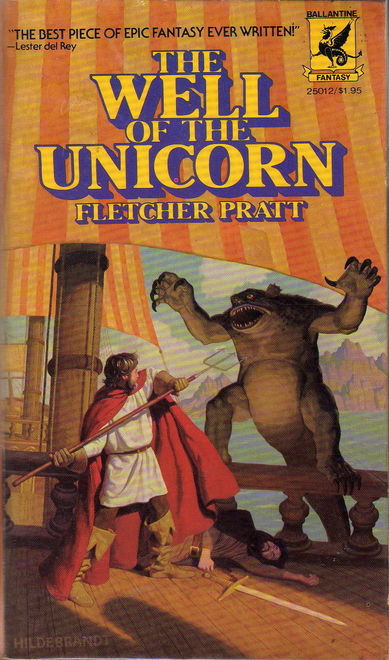 |
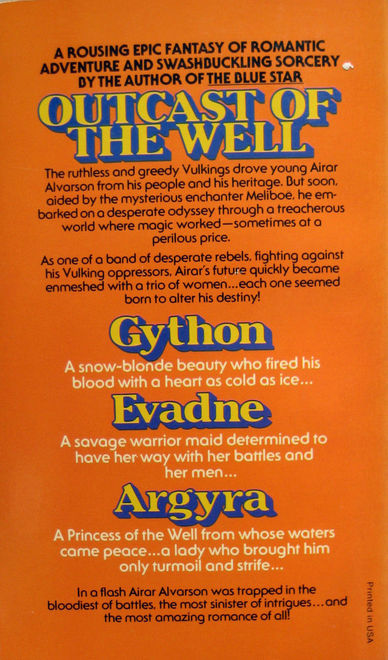 |
Reading Room, Book Reviews by Lester Del Rey. I found it interesting that he delves right into the fan feuds — or a lack of them, in Big Name Fan Harry Warner:
All Our Yesterdays a book of fandom history
The Blue Star and The Well of the Unicorn, both given the thumbs up.
Moondust by Thomas Burnett Swann, a pan! “This novel shows neither the delights in invention nor poignant feelings that have previously been so strong in his work. The nonhuman and semi human creatures here arouse no warmth and hardly a compassion.”
Priest Kings of Gor, by John Norman, which Del Rey finds “Better than might have been expected.” And he makes the comment “I don’t know how much further Norman can go with his serious.” Hah hah!
The God Machine, by Martin Caidin, mediocre!
The Seeds of Gonyl, Part II, by Keith Laumer. Jeff Mallory wakes to find the world changed, his wife is different, his two sons are different, his teenage daughter is missing and nobody remembers her. What people tell him of his life does not match his memories. There is also a giant structure outside of town, that’s never been there before, except that everyone seems to think it has always been there.
What the heck is going on? Mallory finds his way to a creepy militia-type group, who believe that there has been some kind of mind-control invasion by the Chinese. He finds his daughter, who ends up helping him escape from the creepy militia compound, where he falls into the hands of a fanatical religious organization and from that he gets involved with a two-man outpost of aliens (now down to one barely-alive man), and realizes that his uncle was alien number two, and is told a tale of two sentries on a primitive world. All of which he suspects is a giant lie! To be continued in part III! Whew!
This story was well written but pretty tough to wade into mid-stream; I doubt I’ll follow it to its conclusion (so far only Robert Silverberg’s Downward to Earth from Galaxy 11/69 has that privilege).
The Seeds of Gonyl was renamed The House in November and reissued in paperback by Berkely in 1971, with a cover by Richard Powers.
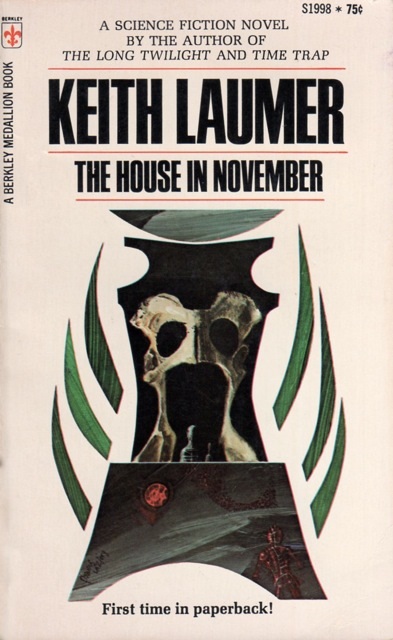 |
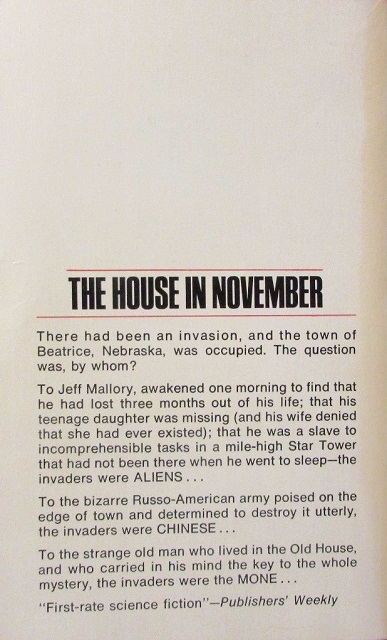 |
“Appropriate Punishment,” Theresa M. Treadway. An old man on an alien world is dying. As is the way of such things, he is also judged by the Eyes of Flame, but found wanting and sent off to Planet Hell to learn his lesson. Which means he’s been reborn on Earth in North America:
[…] on a sunny day in June, a baby was born to Willie and /violet Hawkins. He was a beautiful baby, with skin as black as coal. They named him Gordon.”
The punch of the ending (that the Earth is hell, and being black in America is a particular kind of hell), is a bit undercut by the rather provincial definition of “sin” in the alien world.
Joy? You brought joy? You charmed the maidens and spoiled them for their husbands. You did not go on the hunt because you were lazy. And you refused to do any meaningful work to improve the lot of your village and your tribe. Your life was full of sins.
Oh noes! Gettin’ laid and spending too much time fishin’. Have you no decency! Don’t wait to be reborn on the Hell Planet, answer the question!
Column, Hue and Cry — the letters section! Some angst about the new-wave, and idea to have a book about sci-fi magazine letters, but otherwise pretty much a standard letters column.
Science fiction writing at this time appears to be finding itself somewhat put-upon. Star Trek had run from September ’66 to June ’69 (Tiptree even throws in a ‘Spock’ reference in “Happiness is a Warm Spaceship”), and Twilight Zone (’59-’64) was in heavy syndication. Kubrick/Clarke’s 2001 was out in ’68. These things both borrowed from the existing body of science fiction literature, and, in turn, science fiction literature finds itself having to compete with them.
Black Gate last covered If magazine with the July 1961 issue.
Adrian Simmons is an editor for Heroic Fantasy Quarterly. His last review for us was the July/August 2017 issue of The Magazine of Fantasy and Science Fiction.
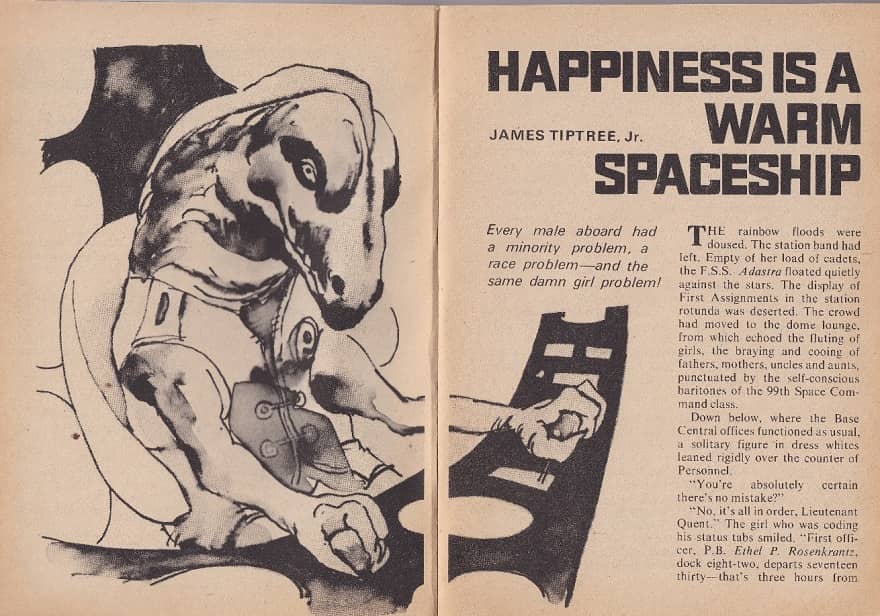

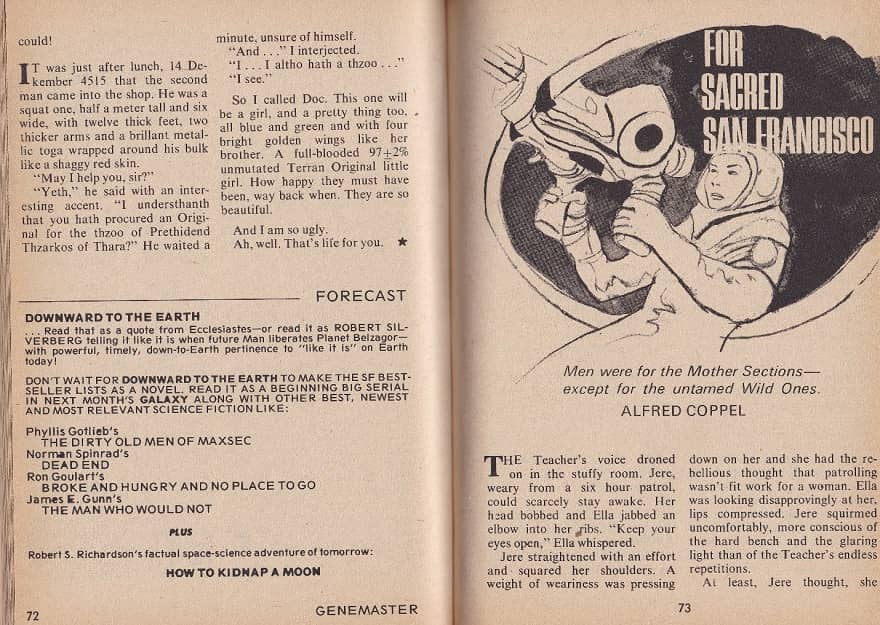
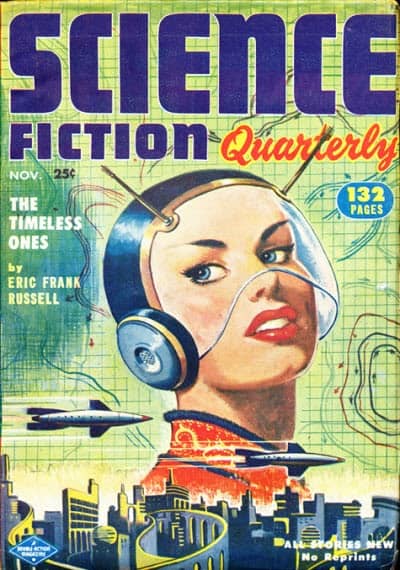
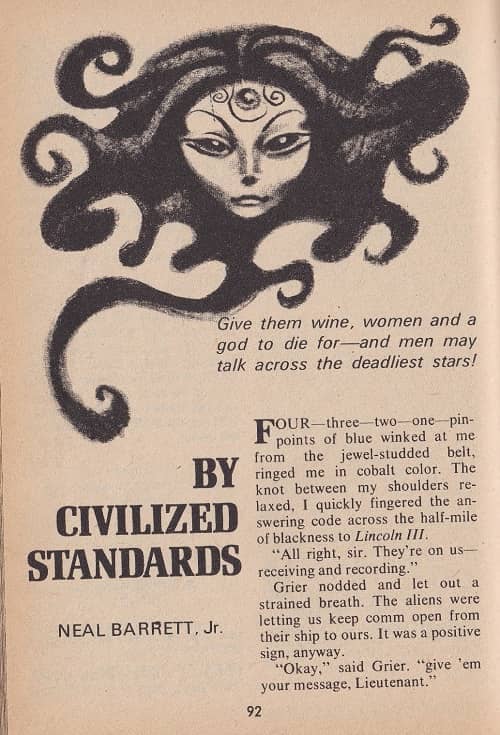
I can’t say that anything in this issue sounds very enticing, but I enjoyed the blast from the past even so.
Been waiting for a review of IF for awhile now. A snide remark at my father’s funeral by my older brother led to a three year hunt for all 175 issues of IF and was done in three years. Laumer was the big draw for me but I have to be selective in my enjoyment of him. Most of the time I liked his Retief stories.
Alice Sheldon only kept up the Tiptree “ruse” for about 6 years. The first Tiptree story appeared in 1968, and I believe it was 1974 when she revealed, as it were, the woman behind the curtain. (Partly because “The Women Men Don’t See” was up for awards and was getting praised for how well the presumed male writer understood women — Sheldon didn’t feel it right to take credit for that.)
She continued to use the Tiptree name for most of her fiction (though some was as by “Raccoona Sheldon”) for the rest of her life.
—
Rich Horton
Major Wooton- I found most of the stories to be pretty fast-moving, so if you happen to run into this issue I’d recommend it. “Seeds of Gonyl” can be forgiven since it is part 2 of a 3-parter.
Allard– that must have been one remarkable snide remark to send you on a chase like that. Laumer’s “For Sacred San Francisco” was good, but I got the feeling he was tipping his hat to something, but I wasn’t sure what!
Rich Horton– I read the biography of Alice Sheldon pictured in the article, it is fascinating! It isn’t the first instance I’ve read of a writer doing much better under a pseudonym than their own name.
To Adrian: I was the reader in the family and the youngest and was perceived as a bit coddled and spoiled by my oldest who was the proverbial Black Sheep in the family and never on any one’s good list but in fairness my parents kept us all on a VERY short lease. My reading was almost every Edgar Rice Burroughs book I could get as Ace and Ballentine released them. I discovered the F digests and the November 1964 with Keith Laumer’s The Hounds of Hell Part 1 caught my eye and I have liked Laumer ever since though as I got older the thrill faded just a bit. Other then one issue of Galaxy that the extent of my digest collecting.
Movign ahead to age 50 in 2001 and my father passed away and getting to the funeral was an adventure in itself. I had not by choice seen my brother in years other then once when he passed thru on a truck run. We were attempting to put the past behind us and be at least civilized when the remark was made by him with a sneer—“You were always reading those science fiction magazines.” I glared and privately thought “Idiot–the majority of my reading was Adventure. He never knew me.”
That got me thinking. I had plenty of comics and even a growing run of Prince Valiant strips from the newspapers and I yet to meet an American with as many 2000 ADs as I own (currently 1725 of them) but no digest. Why not show this so and so I can do science fiction and IF was my only choice. The majority of them came from three sources: Dragon’s Lair-Dayton Ohio, Bookery Fantasy-Fairborn Ohio (home away from home) and Curious Book Store (E. Lansing MI). Dragon’s shit down a few years back but the Bookery is still running stronger then ever though owner Tim and I getting long in the tooth. Curious is done every few years or so by phone. Now if I would only read them. 🙂
Allard- quite a story. You’ve collected all the issues of IF, have you read them?
To Adrian: Other then Laumer’s stories -mostly the Retiefs I have actually done very little reading in them. I did read the entire first issue and even wrote a summary of my thoughts on each story but I discovered while doing it I don’t really have the skills to effectively judge a story past I liked or didn’t like it. My real passion is comics and the digest was to fill a collector square. As a side note I have and am still trying to complete a run of the Saint Detective/Mystery/Magazine and have over 100 of them. With THOSE I began reading at least one story out of each issue. I have more patience with mystery then science fiction these days. Sorry it took so long to see this comment.